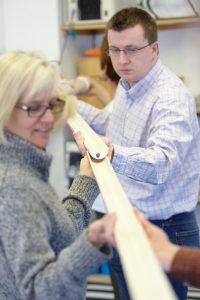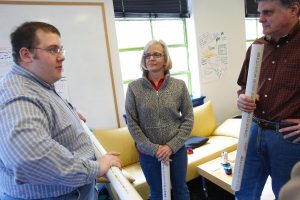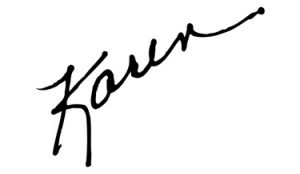The Wunderlin Company’s approach to cultural change is rooted in our collective experiences with GE’s Work-Out process. This newsletter is co-authored with Carol Schifman and Laura Butcher. Together we have more than six decades of GE Work-Out experience with organizations all over the world.
GE Work-Out was a source of a major transformation at GE – part of its evolution from a stodgy, monolithic enterprise weighed down by bureaucracy in the mid-1980s.
Our recent experiences bringing Work-Outs to new clients have reinforced its continued power as a tool to improve work environments and increase profitability.
GE Work-Out places the work to be done – or the problem to be solved – in the middle of an organization and surrounds it with the people who know it best. This unlocks new resources for problem-solving.
Problem-solving teams ask questions like: “Why do we do things this way?” and “What if we could try this …” At the same time, leadership teams say, “I’m listening….and I’ll support you to make that change.”
The result is a transformational combination.
While the process is directed from the top of the organization, it is implemented with broad participation from employees throughout the organization. As a result, GE Work-Out creates broad coalitions across every level. Employees start to care deeply about success because they are connected to the organization and can make change happen. The Work-Out process also provides a vehicle for organizations to optimize speed, cost and quality – without compromising any of these measures — and results in new levels of success.
Proof it works

Recently, we helped a financial services company introduce GE Work-Out and facilitated a number of their early problem-solving sessions. A highlight for Laura was when true “breakthrough thinking” occurred, resulting in a 90-percent cycle-time reduction. By making a few simple changes to their standard business contracts, the contract negotiation process was shortened and the legal department was no longer consumed by iterative “red lining” of agreements. It was proof that Work-Out really works – even in a legal department!
Early on in Karen’s consulting career, The Wunderlin Company was engaged to instill the GE Work-Out process throughout the city government of Louisville, Kentucky. From the city garages to garbage pickup to purchasing processes, we worked with government employees to tackle difficult problems. The results were nothing short of remarkable. In terms of time and money saved, citizen services improved, and overall morale was boosted. In fact, the program was so successful that the Louisville government was awarded a Ford Foundation Innovations in Government Award to teach other cities how to implement the process.
Carol worked recently with a utility distribution business that was able to save $1.8 million by buying pre-fabricated parts it expects to save nearly $20 million by rolling out the program system-wide – all thanks to the Work-Out process. That same company was also able to make similar improvements to its collections, prepayments and safety programs.
Another example of success was a Safety Work-Out that turned around a difficult trend for the company, achieving a 25 percent reduction in preventable motor vehicle accidents and OSHA recordables within one year. The company also revamped the entire Accident Prevention Manual in just five days with 35 union and 15 management employees.
Why it works
GE Work-Out gets the whole system in the room. How many times have you or an associate been frustrated by a work process that you know can work better, but change is hampered by wondering how to win cooperation from “those people over there” — whether it’s production or people in the field or finance? An essential tenet of Work-Out is to get the whole system in the room.
Work-Out significantly shortens decision times. A typical task force meets for two hours every week or so for a couple of months, presents to leadership, and then waits days, weeks or longer to hear the final decisions. With GE Work-Out, teams work with a facilitator for 2-4 days, and then leadership joins the group. The teams make their recommendations for improvement and leadership makes the decision on the spot. In our 20-plus years of leading Work-Outs, at least 80 percent of suggestions have won “yes” responses. That isn’t because senior leaders become easy marks in public forums. It’s because if you ask the people who do the work how to do it better, they come up with practical, effective solutions.
Work-Out is much better than training. Frequently leaders talk to us about how to get employees to change their behavior. What we have seen is the “double benefit” of Work-Out experiences: In addition to identifying and implementing recommendations to improve business results, associates learn new ways to do their work. A participant in a Work-Out about fleet maintenance told us a year after his Work-Out experience, “If I came in tomorrow and we went back to the old way of working, I would quit.” Now that’s sustained organizational change!
People support what they help create. In Work-Out, participants own their approved solutions. Instead of “selling” their good ideas to the rest of the organization, the organization gets involved in selecting the best approaches to improvement, making implementation go more quickly and smoothly.
The Work-Out process is elegant in its simplicity – yet deceptively powerful on so many levels
- You can get traction quickly working on important problems or opportunities.
- You can increase associate involvement and ownership in generating solutions. The people closest to the work are called upon to create and own the solutions; thereby creating support and buy-in.
- You can break down real or imaginary organization boundaries – between manufacturing and engineering, sales and marketing, field and headquarters – because you start to look at the process end-to-end and with a customer-focused perspective. Participants gain valuable perspectives on their jobs and learn about other processes within the company.
- Leaders can demonstrate a leadership style that engages people in a more transparent and interactive way and gives associates, those closest to the work, the power of being involved in decision-making.
Here’s a step-by-step look at how it works.
 1. Leadership identifies a critical organization issue or problem.
1. Leadership identifies a critical organization issue or problem.
2. A small group of people from several functional areas comes together for uninterrupted work time with the pressure of a deadline as a catalyst and the assistance of skilled facilitators to support their work.
3. The group works to develop and present recommendations it can implement.
4. Leadership hears their recommendations and gives a “Yes,” “No,” (and “Here is why”) or “Further Study” and then empowers teams to implement approved recommendations.
5. The teams implement accepted recommendations.
6. The teams come back together at a predetermined time usually 90 – 120 days later – to report their progress.
At its core, Work-Out is a means for driving cultural change. In the short term, you can increase efficiency, improve work processes, eliminate nonessential work, involve your people in the process and increase communication. Long-term, it empowers your people, sustains productivity improvements, and, perhaps most importantly, creates true partnerships.
What has to happen?
Senior leadership has to support the Work-Out. Participants’ most common fear: “Senior management will never really let us do this.”
Planning is critical. A small group of folks has to spend a couple weeks crafting the question to be answered, recruiting the right people to participate and gathering relevant background information.
Skilled facilitators are needed. Teams need a facilitator who knows WorkOut and is highly skilled in bringing cross-functional teams to a high-performance state. The facilitator ensures the Work-Out teams’ efforts are focused and efficient, completing specific Action Plans to be accomplished within 90 days. The group must feel free to disagree, discuss, explore and problem solve in a short, intense period.
Try Work-Out
If you want to quickly see results, try Work-Out.
If you want to improve dialogue, remove barriers between functions and bust bureaucracy, try Work-Out.
If your workgroup has been wrestling with an issue for some time or is struggling to improve its performance, try Work-Out.
In 2013, it holds special value: Being able to move quickly to take advantage of emerging opportunities and to streamline processes differentiates recovery from continued struggles.
When considering your department’s or organization’s recovery strategy, consider working in Work-Out—it really works!



Leave a Reply